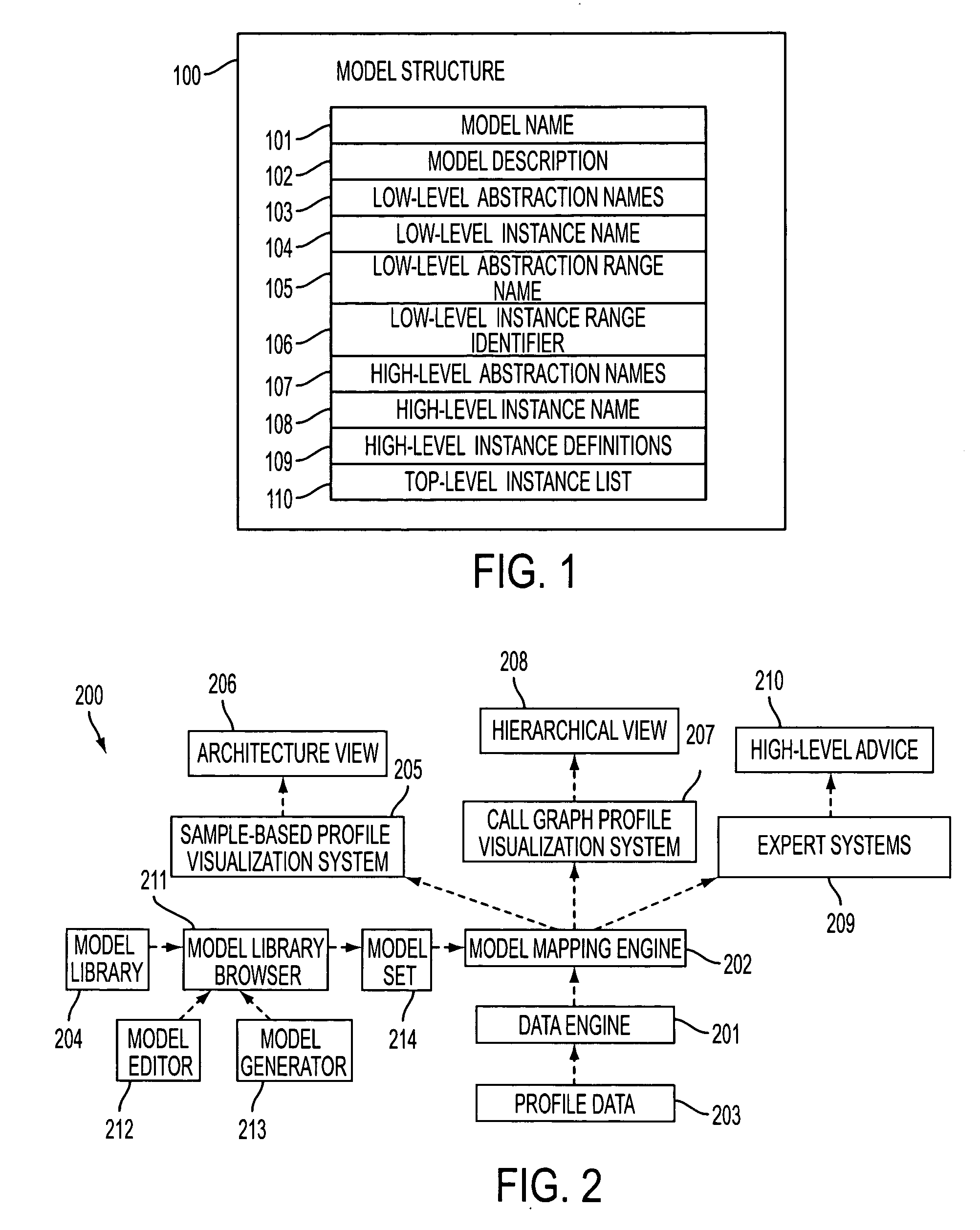Analyzing software performance data using hierarchical models of software structure
a software structure and hierarchical model technology, applied in the field of software performance profiling, can solve the problems of limiting the methods described above, affecting the user's understanding of application performance in terms of high-level abstractions, and increasing the complexity of current software applications
- Summary
- Abstract
- Description
- Claims
- Application Information
AI Technical Summary
Problems solved by technology
Method used
Image
Examples
Embodiment Construction
[0026] Exemplary embodiments of the invention are discussed in detail below. While specific exemplary embodiments are discussed, it should be understood that this is done for illustration purposes only. A person skilled in the relevant art will recognize that other components and configurations may be used without parting from the spirit and scope of the invention.
[0027] Exemplary embodiments of the present invention may enable performance tools to analyze profile data in terms of high-level units of abstraction such as, e.g., applications, subsystems, layers, frameworks, managed runtime environments, operating systems, etc. Further, exemplary embodiments of the present invention may provide an improved system and method for mapping profile data to units of abstraction.
[0028] In an exemplary embodiment of the invention, a model structure may be used to define, for example, a set of high-level abstractions, a set of named instances of those abstractions, and a mapping between each ...
PUM
 Login to View More
Login to View More Abstract
Description
Claims
Application Information
 Login to View More
Login to View More - R&D
- Intellectual Property
- Life Sciences
- Materials
- Tech Scout
- Unparalleled Data Quality
- Higher Quality Content
- 60% Fewer Hallucinations
Browse by: Latest US Patents, China's latest patents, Technical Efficacy Thesaurus, Application Domain, Technology Topic, Popular Technical Reports.
© 2025 PatSnap. All rights reserved.Legal|Privacy policy|Modern Slavery Act Transparency Statement|Sitemap|About US| Contact US: help@patsnap.com



